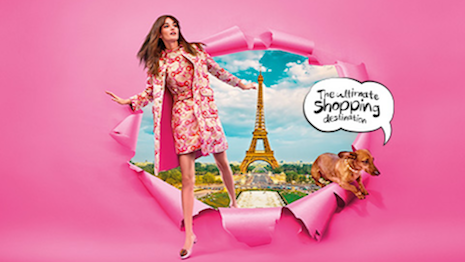- About
- Subscribe Now
- New York,
February 12, 2018

 L2 found that not enough retailers are embracing features such as same-day, in-store pickup. Image credit: Galeries Lafayette
L2 found that not enough retailers are embracing features such as same-day, in-store pickup. Image credit: Galeries Lafayette
Omnichannel has been one of the dominant goals in retail, and a new report from L2 shows how some of the top retailers in the space are attracting and engaging with customers.
One of the most important aspects of a healthy omnichannel strategy is a focus on fulfillment, helping customers follow through and complete their purchases in the easiest way possible. L2 found that more than 75 percent of analyzed brands now offer free shipping as a way of enticing customers to complete their purchase.
"Warnings of store closures and the retail apocalypse have been rampant over the past few years," said Evan Neufeld, vice president of intelligence at L2, New York. "However, what's often overlooked is the Darwinian-like process by which retail is evolving.
"Year-on-year, brands have been making smarter, more consumer-focused investments in omnichannel marketing, with traditional players such as Target and Walmart fighting alongside digital-first brands like Warby Parker and Away for consumer dollars," he said.
Omnichannel retail
Omnichannel retail provides some incredibly valuable advantages to both retailers and customers. From app integration to social media, retailers have been leveraging digital tools to improve the shopping experience for customers.
To determine exactly what some of the winning strategies have been, L2 analyzed a number of brands and retailers and culled the data looking for trends among the top-performing ones.
L2 identified a few trends as indicative of the kind of forward-thinking approach to omnichannel that retailers need. For example, 33 percent of retailers offer the option to order something online and pick it up the same day in-store.
Other features such as filtering products in an online store by their in-store availability and using imagery of physical stores online to help familiarize customers with the layout are both smart but uncommon, with only 23 and 31 percent of retailers using them, respectively.
For luxury, one concerning find from the report is that fashion retailers are the least likely to have a mobile app that supports in-store shopping, with only 13 percent of retailers having that option. Compared to 79 percent for department stores, this disparity is large and should be a priority for fashion brands and retailers in the future.
Catching up
A survey of the luxury business shows that brands and retailers from across sectors are prioritizing omnichannel.
For instance, precision-cut crystal maker Swarovski engaged shoppers last holiday season through environments that blend physical and digital experiences.
In Toronto and Milan, the brand digitized the store concept with spaces that featured activations such as virtual reality and digital walls. The physical store no longer needs to be tied to traditional formats, allowing brands to incorporate digital as a means of immersing consumers in their worlds (see story).
Last year, French department store chain Galeries Lafayette inaugurated a new experience-led store concept at the Carré Sénart shopping center in the Paris region.
Galeries Lafayette’s concept is the first of its 56 French stores to incorporate fully omnichannel selling tactics and is firmly anchored in the local environment. The latest Galeries Lafayette location is considered the first significant addition to its French store network in the past few years (see story).
These efforts, along with the data compiled by L2, show that the luxury business at large is aware of the importance of omnichannel, but is taking a little while to get there. But as customers become more familiar with omnichannel techniques and begin to expect them, those retailers and brands will have to hurry to catch up.
"Brands have become more sophisticated in integrating their digital and physical assets, making it easier than ever for consumers to switch between competing brands," said Evan Bakker, senior associate at L2. "Brands must enhance their omnichannel investments by doing things like drive-through pick-up, allowing online shoppers to collect their orders without having to enter busy stores."
Share your thoughts. Click here